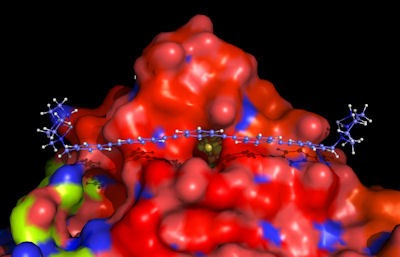CONTROLLED ORIENTATION OF REDOX ENZYMES ON ELECTRODE SURFACES
The direct electron transfer between redox proteins and electrodes is a fundamental issue in bioelectrocatalysis, bioelectronics, biosensors, biofuelcells and nanobiotechnology. The goal of our research is to design functional surfaces on a molecular level to advance our ability to effectively control and direct the electrochemical activity of biomolecules.
We use organic chemistry, molecular biology and electrochemical approaches to build biologic-organic hybrid architectures. We are working on the development of nanosized chelators to achieve the specific recognition and orientation of a redox protein. Our interest is to gain fundamental information on the chelate effect on the supramolecular level. Understanding and adjusting the molecular recognition between the receptor and the guest in combination to designing electron relays to bridge redox enzymes are the key issues to achieve controlled orientation and fast electron transfer. We apply our redox protein immobilization concepts for sensing (nitrate biosensors) and energy conversion applications (bio-photovoltaics and bio-fuel cells).

Figure 1: A receptor-guest assembly between a genetically engineered hydrogenase and a rigid nanosized chelator.

